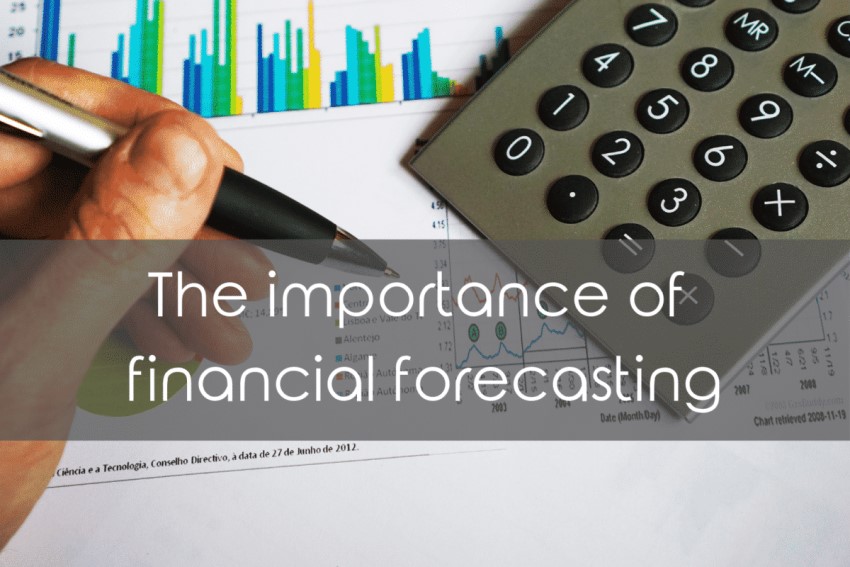One of the most common characteristics of conducting business is uncertainty. Numerous uncontrollable events have the potential to have an unexpected impact on the market. So understanding financial forecasting is crucial. Regular financial forecasting is extremely beneficial for every organization. Here’s a comprehensive guide to the importance of financial forecasting to your business model and how to do it.
What is Financial Forecasting?
Financial projections are referred to as financial forecasts when making decisions about predicting future business performance. Analysis of previous business performance, present business trends, and other pertinent elements are all part of the financial forecasting process. Nevertheless, several elements of financial forecasting may change based on the nature and objectives of the projection, as will be covered later.
Importance of Financial Forecasting in Business Planning
Every financial choice your business will make over a specific time period will be based on the forecasts. Effective financial forecasting can help your firm thrive by producing better financial results, more consistent cash flow, and greater access to financing and investments.

Department heads can more efficiently manage spending for their staff with forecasting in place. Teams working on the supply chain and procurement can schedule production, distribution, and capacity. Based on information analysis, sales and marketing professionals can create sound sales metrics and targets.
Additionally, the forecast is a crucial gauge of the general health of your financial organization. A well-supported forecast can help identify and address areas of deviation as the fiscal year goes on by contextualizing current performance, demonstrating the efficacy of current revenue-generating strategies, evaluating the market’s impact on financial results, and contextualizing current performance.
Detail steps to create Financial Forecasting
Determine the Purpose
Defining purpose is the first and most important step in creating a financial forecast. Companies can forecast data for a variety of reasons like budget analysis, product & service reviews, and more. For each objective, the analyst needs to use different elements of the business.
Expense and cash flow forecasting
Your forecast should attempt to gauge projected costs against the company’s current goals, adjusted for consequences such as inflation and increased costs of goods and services. The better your procurement data, the more accurately you can predict these costs.
Risk analysis
Part of your contingency plan should consider liability caused by internal and external forces. While contingency planning for external sources of risk is necessary, it is also necessary to plan for internal risk factors such as employee misconduct, lawsuits, and crisis events.

Best methods for financial forecasting
-
Use a basic financial plan: Using a basic financial plan is one of the best ways to predict your finances. A simple financial plan can help you keep track of your income and expenses, set achievable financial goals, and make informed decisions about how to best manage your money.
-
Review your current financial situation: Assessing your current financial situation helps you understand where your money is going and identify areas where you may be able to cut back or make adjustments. By regularly tracking your income and expenses, you can stay on top of your finances and make informed decisions about how to manage your money.
-
Regular updates: Keeping your financial projections up-to-date allows you to track changes in your income, expenses, and financial goals, and make any necessary adjustments. This can help ensure that your financial plans remain relevant and on track.
-
Consider the impact of external factors: The external factors that you mentioned can have a significant impact on your finances and should be taken into consideration when making financial projections. For example, fluctuations in the economy can affect your employment and income, while changes in the cost of living can impact your expenses.
Major financial forecasting challenges

Forecast period
The shorter the time period, the more accurate the financial forecast. The longer the time period, the less accurate and difficult financial forecasting becomes. Mostly, fewer difficulties occur in a short period of time and more difficulties occur over a long period of time.
Data collection
It’s never been easy to collect and assemble all of your business financial data to go the extra mile. This task can take anywhere from a week to several weeks to gather all the information to build a cash flow forecast and revenue forecast.
Accuracy of past data
Financial forecasting is made based on past business data to predict the future. If a company has results that vary from year to year, using the previous period’s data is worthless. In addition, financial data will not be available to startups, as they must be approximated without any exact idea.
Unforeseeable Events
The unpredictable nature of financial forecasting is another issue. Unpredictability can never be reached, despite the fact that organizations acquire quantitative and qualitative forecasting methodologies to make their predictions accurate. These elements are inherently unstable and vulnerable to forecast risk.
Conclusion
Financial forecasting is the practice of predicting future financial performance using historical financial performance, as well as the current state of the economy and the market. For people, companies, and organizations, accurate financial forecasting is crucial because it paints a clear picture of future financial performance and enables proactive planning and decision-making.

